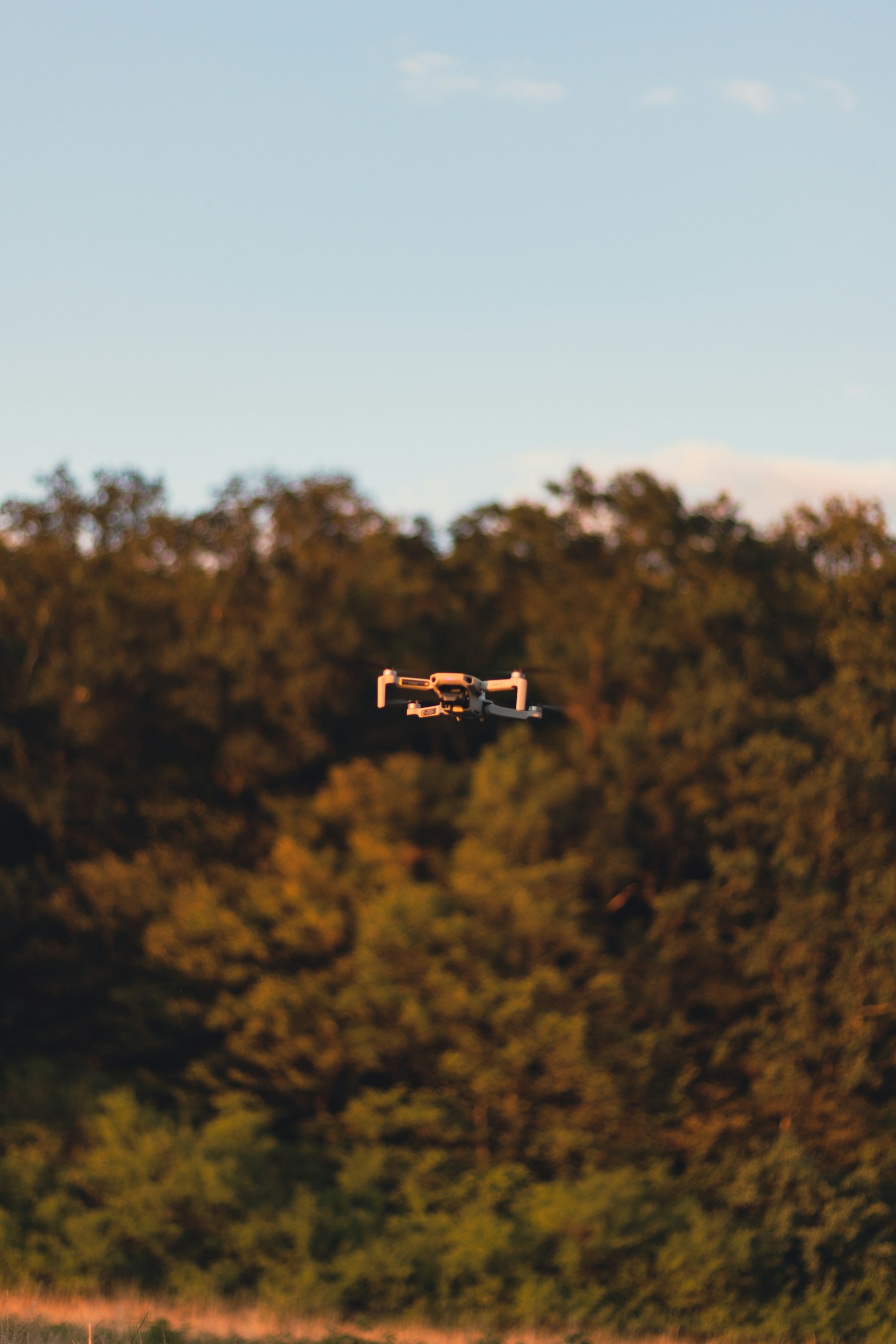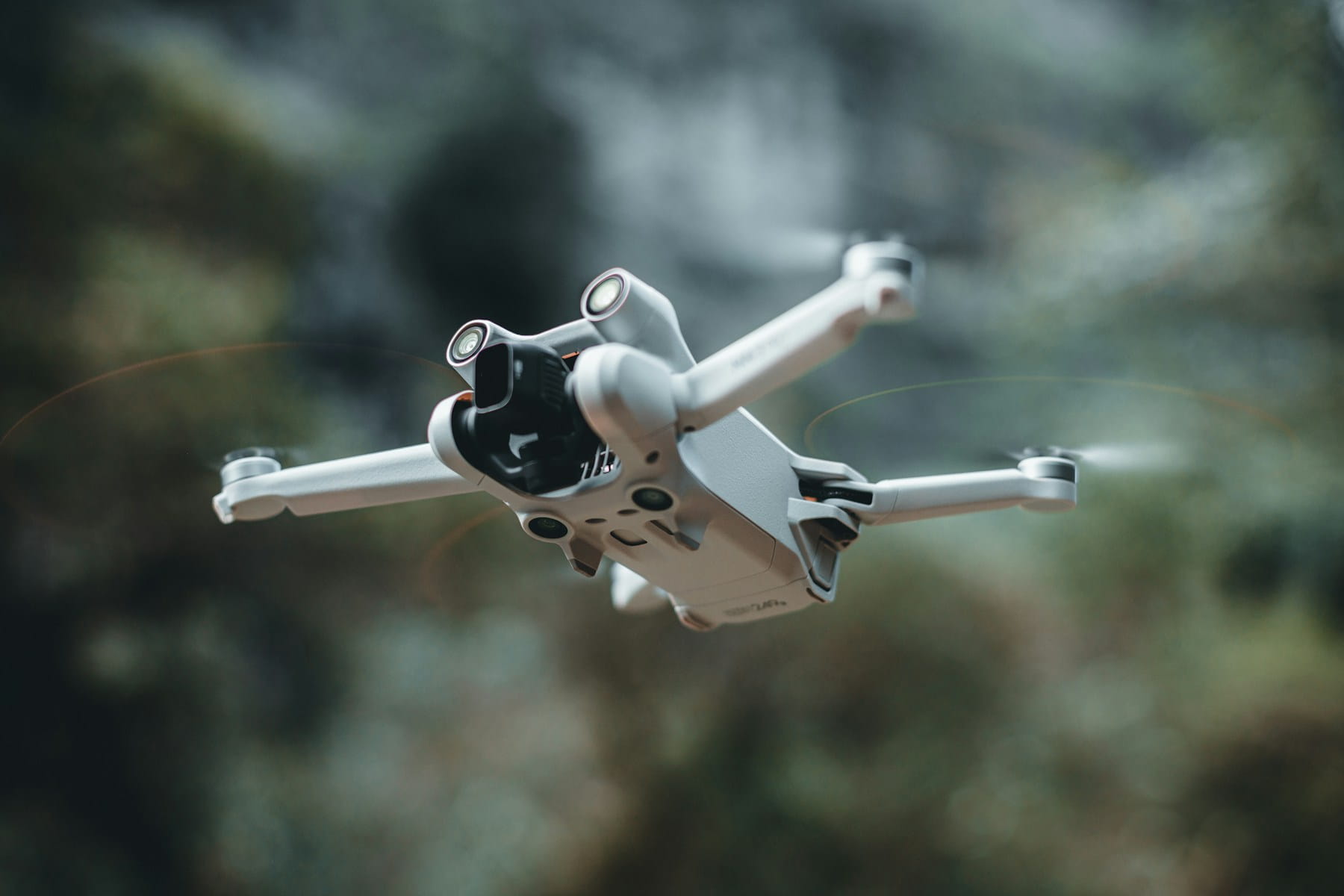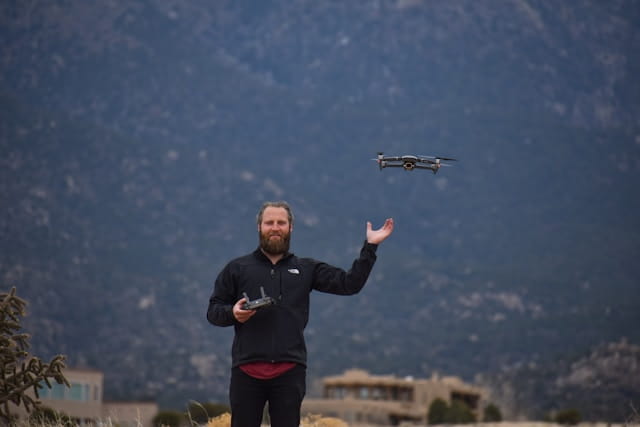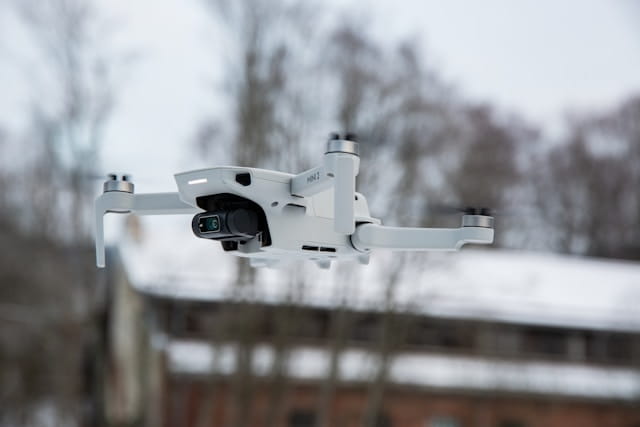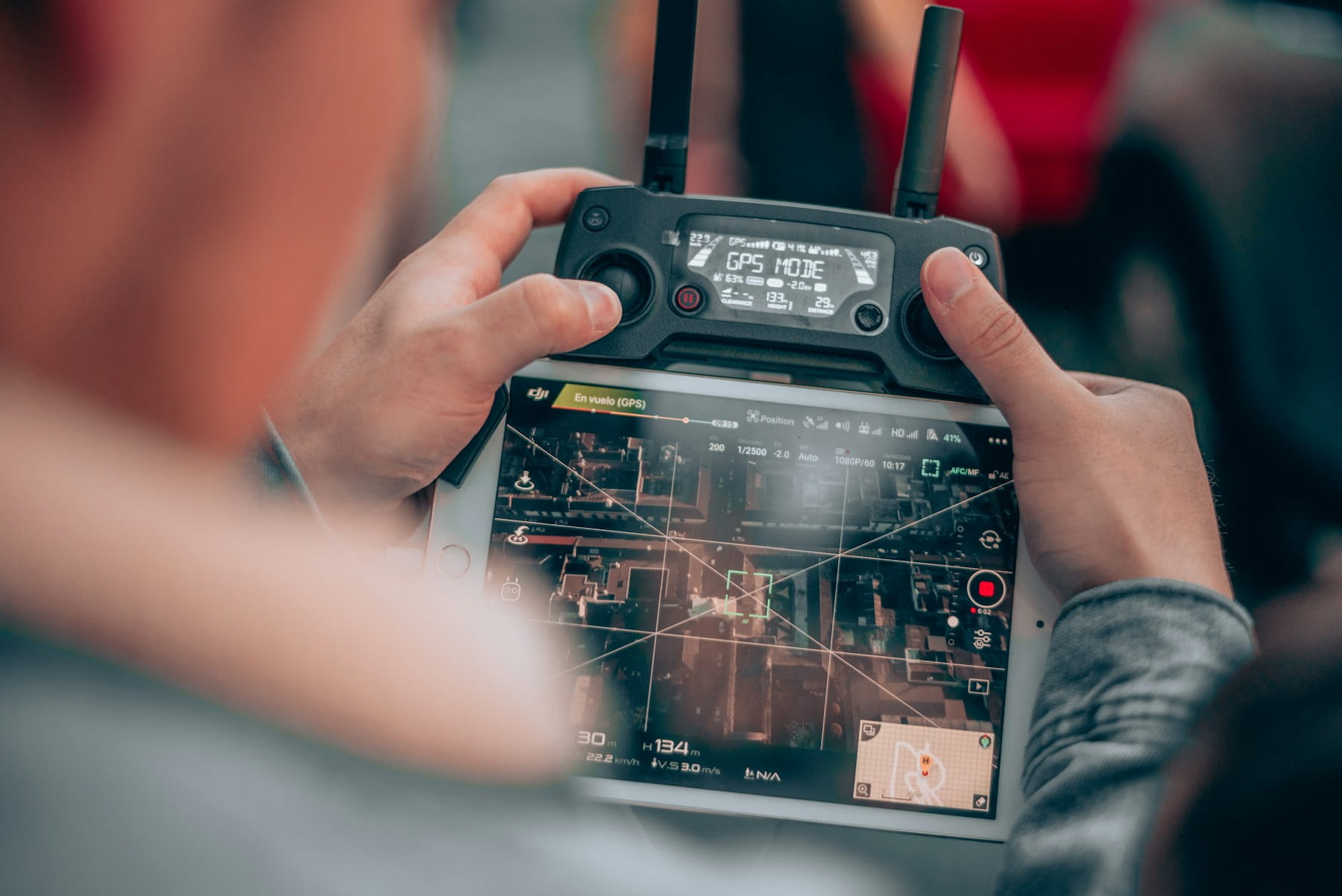What is Part 107 Certification?
Part 107 certification is the Federal Aviation Administration's (FAA) regulatory framework that authorizes commercial drone operations in the United States. It establishes requirements for pilot certification, operational limitations, safety standards, and waiver processes that enable businesses to conduct legal drone operations while maintaining airspace safety.
Getting certified to fly drones commercially isn't just about passing a test (though that's definitely part of it). The Part 107 certification represents the Federal Aviation Administration's framework for safe commercial drone operations, and it's become the gateway for anyone looking to turn their drone hobby into a business venture.
The Remote Pilot Certificate under Part 107 has fundamentally changed how commercial drone operations work in the United States. Before this regulation came into effect, commercial drone pilots had to navigate a complex web of exemptions and waivers that could take months to process. Now, the path to commercial drone operations is much more straightforward, though it still requires serious preparation and ongoing compliance.
Table of contents
- What is Part 107
- Who needs Part 107 certification
- Age and eligibility requirements
- Knowledge test requirements
- Study materials and preparation
- Taking the Part 107 exam
- TSA security threat assessment
- Operational limitations under Part 107
- Waiver process for restricted operations
- Record keeping requirements
- Recurrent training and renewal
- Common violations and enforcement
- Frequently Asked Questions
- Beyond basic certification
- Implementation considerations
- In summary
What is Part 107
Part 107 refers to Title 14 of the Code of Federal Regulations Part 107, which governs the operation of small unmanned aircraft systems (sUAS) for commercial purposes. This regulation went into effect on August 29, 2016, establishing the regulatory framework for commercial drone operations weighing less than 55 pounds.
The regulation covers everything from pilot certification requirements to operational limitations and aircraft registration. Think of it as the rulebook that allows businesses to operate drones legally while maintaining safety standards that protect both people on the ground and other aircraft in the sky.
Part 107 applies to any drone operation conducted for business purposes, whether that's real estate photography, infrastructure inspections, agricultural monitoring, or emergency response services. Understanding drone compliance requirements is necessary for anyone looking to commercialize their operations.
Who needs Part 107 certification
Any person acting as pilot in command of a small unmanned aircraft for commercial purposes must hold a Remote Pilot Certificate. This includes obvious commercial activities like aerial photography services, but also extends to situations that might not immediately seem commercial in nature.
The following scenarios require Part 107 certification:
- Real estate agents photographing properties for listings
- Insurance adjusters documenting damage claims
- Construction companies monitoring job sites
- Agricultural operations conducting crop surveys
- Public safety agencies performing search and rescue missions
- Research institutions collecting data for studies
- Filmmakers capturing footage for commercial productions
Even if you're not directly charging for drone services, you need certification if the flights support a business activity. For example, a roofing contractor using a drone to inspect their own buildings for potential repair projects would need Part 107 certification, even though they're not selling drone services to others. Starting a drone service business requires careful attention to these certification requirements.
The "commercial" designation can be tricky to interpret. Generally, if the flight supports any business purpose or if you receive any form of compensation (including non-monetary benefits), you need the certificate.
Age and eligibility requirements
Remote pilot candidates must be at least 16 years old to obtain Part 107 certification. There are no maximum age limits, but pilots must demonstrate the physical and mental fitness necessary to safely operate an unmanned aircraft.
Language proficiency requirements mandate that pilots be able to read, speak, write, and understand English. This requirement stems from the need to communicate effectively with air traffic control and other pilots, as well as to understand technical documentation and regulatory guidance.
The regulation doesn't specify particular educational backgrounds or prior aviation experience requirements. Someone could potentially go from never having touched an aircraft to holding a commercial drone certificate, assuming they can pass the knowledge test and meet other requirements.
Physical fitness standards are less stringent than those for manned aircraft pilots, but remote pilots must still be capable of safely operating the aircraft. This includes having adequate vision (corrected vision is acceptable) and the physical capability to maintain control of the aircraft throughout the flight.
Knowledge test requirements
The Part 107 knowledge test consists of 60 multiple-choice questions that must be completed within two hours. Candidates need a score of 70% or higher to pass, meaning they can miss no more than 18 questions.
Test topics cover a broad range of aviation and drone-specific knowledge areas:
Airspace classification and operating requirements form a major portion of the exam. Candidates must understand different types of airspace, special use airspace, and the authorization requirements for different airspace classes for drones.
Weather theory and sources require understanding of weather systems that affect drone operations, including wind patterns, visibility conditions, and how to interpret aviation weather reports like METARs. Understanding weather considerations for professional drone operations is critical for safe flight operations.
Aircraft performance covers factors affecting drone flight characteristics, including weight and balance considerations, density altitude effects, and performance limitations under various environmental conditions.
Physiological effects on pilots might seem odd for remote operations, but the test covers topics like stress, fatigue, and situational awareness that affect remote pilot decision-making.
Crew resource management addresses communication, workload distribution, and decision-making processes for drone operations involving multiple team members.
The knowledge test also covers specific Part 107 operational requirements, maintenance and inspection procedures, and emergency response protocols.
Study materials and preparation
The FAA provides several official study resources, starting with the Remote Pilot Study Guide, which covers all knowledge areas tested on the exam. This guide includes sample questions and explanations that help candidates understand not just what the correct answers are, but why they're correct.
The Pilot's Handbook of Aeronautical Knowledge contains detailed information about airspace, weather, and aircraft performance principles that apply to both manned and unmanned aircraft. While not drone-specific, this handbook provides the aviation foundation that Part 107 pilots need to understand. Professional UAS pilot training goes beyond test preparation to develop practical operational skills.
Aviation Weather Services (AC 00-45) offers detailed weather information interpretation guidance. Since weather conditions significantly impact drone operations, understanding how to read and interpret weather data is important for safe operations.
Many candidates also use third-party study materials, including online courses, practice tests, and study guides specifically designed for Part 107 preparation. These materials often present information in more digestible formats and provide additional practice opportunities.
The key to successful preparation involves understanding concepts rather than memorizing answers. The test questions can be presented in various formats, so candidates who understand underlying principles will perform better than those who rely solely on memorization.
Practice tests help identify knowledge gaps and familiarize candidates with the question format and time constraints. Most successful candidates take multiple practice tests and study their incorrect answers to understand why they were wrong.
Taking the Part 107 exam
The knowledge test must be taken at an FAA-approved testing center, which includes many computer testing facilities that also administer other professional certification exams. Candidates cannot take the test online from home - it must be proctored at an approved facility.
Before taking the test, candidates must present acceptable identification. The FAA accepts driver's licenses, passports, military identification, and other government-issued photo identification that includes the candidate's signature.
Testing centers typically require appointments, and fees vary but generally range from $150 to $175. Some centers offer same-day scheduling, while others may require advance booking, especially in areas with high demand.
During the test, candidates have access to reference materials including sectional charts, airport facility directories, and other publications needed to answer specific questions. The testing software provides these materials digitally, and candidates should familiarize themselves with using these resources.
Time management becomes important during the two-hour testing window. Most candidates finish well before the time limit, but complex questions involving chart reading or weather interpretation can consume significant time if candidates aren't prepared.
Upon completing the test, candidates receive immediate results. Those who pass receive a temporary certificate that allows them to begin the application process for their permanent Remote Pilot Certificate.
TSA security threat assessment
After passing the knowledge test, candidates must complete a Transportation Security Administration security threat assessment. This background check process helps ensure that individuals receiving drone certificates don't pose security risks to the aviation system.
The application process requires personal information including full name, address history, employment history, and citizenship status. Candidates must also provide fingerprints, either at TSA enrollment centers or through mobile fingerprinting services.
Processing times vary, but typically take several weeks. During peak application periods, processing may take longer. Candidates should plan accordingly, especially if they need certification by specific dates for business purposes.
The security assessment includes checks against various databases to identify potential disqualifying factors. Most candidates with clean backgrounds pass this assessment without issues, but certain criminal convictions or other factors may result in disqualification.
Fees for the security threat assessment are separate from testing fees and typically cost around $63. This fee covers the background check process and is required for all initial certificates and certain renewals.
Operational limitations under Part 107
Part 107 establishes specific operational boundaries that remote pilots must observe. These limitations balance commercial operational needs with safety requirements and airspace protection.
Altitude restrictions limit drone operations to 400 feet above ground level, unless the drone remains within 400 feet of a structure and doesn't exceed the structure's height by more than 400 feet. This rule prevents conflicts with manned aircraft, which typically operate at higher altitudes.
Visual line of sight requirements mandate that remote pilots maintain direct visual contact with their aircraft throughout the flight. This means no flying behind buildings, beyond hills, or at distances where the aircraft becomes difficult to see and control.
Daylight operations only restrict flights to the period from official sunrise to official sunset, as defined by local civil twilight times. Night operations require special waivers and additional equipment requirements. Understanding no-fly zones and restricted areas is also critical for legal operations.
Maximum groundspeed is limited to 100 mph (87 knots), though most commercial drones operate well below this limit during typical operations.
People restrictions prohibit flights over people who aren't directly participating in the operation, unless the people are under covered structures or inside stationary vehicles. Recent rule changes have created some exceptions for certain drone categories, but these involve additional requirements.
Moving vehicle restrictions generally prohibit operations from moving vehicles, with limited exceptions for operations over sparsely populated areas.
These operational limitations can be modified through the waiver process, but waivers require additional documentation and approval from the FAA.
Waiver process for restricted operations
When standard Part 107 operations don't meet mission requirements, remote pilots can apply for operational waivers that modify specific regulatory restrictions through the FAA's waiver system. The waiver process allows for more flexible operations while maintaining safety standards through additional requirements and procedures.
Common waiver types include night operations, flights over people, beyond visual line of sight operations, and operations from moving vehicles. Each waiver type requires specific justifications and safety mitigations that demonstrate equivalent levels of safety to standard operations.
Night operation waivers typically require aircraft lighting that makes the drone visible from at least three miles away, pilot training specific to night operations, and procedures for maintaining situational awareness in reduced visibility conditions.
Operations over people waivers involve detailed risk assessments, including calculations of potential injury severity if the aircraft were to impact people on the ground. These waivers often require specific aircraft configurations or operational procedures that minimize risk.
Beyond visual line of sight waivers (BVLOS) are among the most complex, requiring systems and procedures that provide equivalent situational awareness to visual observation. This might include ground observers, radar systems, or other technological solutions.
The waiver application process involves submitting detailed safety cases that explain how proposed operations will maintain safety levels equivalent to standard Part 107 operations. Applications must include operational procedures, risk assessments, crew training requirements, and emergency response plans.
Processing times for waivers vary significantly based on complexity and FAA workload. Simple waivers might be approved within weeks, while complex beyond visual line of sight applications can take months or even years to process.
Record keeping requirements
Part 107 mandates specific record keeping requirements that remote pilots must maintain to demonstrate compliance with regulations and support safe operations.
Aircraft maintenance records must document all maintenance, alterations, and inspections performed on the drone. Proper drone maintenance helps establish aircraft airworthiness and can be critical in accident investigations or regulatory inspections.
Flight logs should document each flight's basic parameters including date, time, location, duration, and pilot in command. While Part 107 doesn't specify exact logbook formats, maintaining detailed records helps demonstrate professionalism and can support insurance claims or legal proceedings. Tracking drone pilot flight hours provides valuable data for operational analysis.
Training records document recurrent training completion, endorsements for specific operations, and any additional training that enhances operational safety or capability.
Many operators maintain additional records beyond minimum regulatory requirements, including weather conditions, mission objectives, equipment configurations, and post-flight inspection results. These expanded records support operational analysis and continuous improvement efforts.
Record retention requirements vary, but maintaining records for at least two years provides good coverage for most regulatory and business purposes. Some operators maintain records indefinitely, especially for operations involving critical infrastructure or high-value clients.
Digital record keeping systems offer advantages over paper-based systems, including easier data analysis, backup capabilities, and integration with other operational systems. However, operators must ensure that digital systems provide adequate security and data preservation capabilities.
Recurrent training and renewal
Remote Pilot Certificates remain valid for 24 months from the date of issuance. Before expiration, pilots must complete recurrent training to maintain their certification and stay current with regulatory changes.
Recurrent training options include taking an online course provided by the FAA or retaking the Part 107 knowledge test. Most pilots choose the online training option, which is typically more convenient and less expensive than retesting.
The online recurrent training covers regulatory updates, safety topics, and operational best practices. Course content changes periodically to address emerging issues or regulatory modifications.
Pilots who let their certificates expire must retake the knowledge test and complete the full application process again, including the security threat assessment. This process takes significantly longer and costs more than completing recurrent training on time.
Staying current between formal recurrent training periods involves monitoring regulatory changes, participating in industry training programs, and maintaining operational proficiency through regular flight activities.
The FAA regularly publishes updates to Part 107 regulations and guidance materials. Successful commercial operators make staying informed about these changes a regular part of their professional development activities.
Common violations and enforcement
Part 107 violations can result in civil penalties, certificate suspension or revocation, and in serious cases, criminal prosecution. Understanding common violation patterns helps operators avoid regulatory problems and maintain professional reputations.
Operating without proper certification remains the most common violation, often involving pilots who don't realize their activities require Part 107 certification or who operate under expired certificates. Airspace violations frequently occur when pilots operate in controlled airspace without proper authorization. People and vehicle violations happen when operators fly over crowds or from moving vehicles without appropriate waivers.
The FAA's enforcement approach typically focuses on education and voluntary compliance for minor violations. However, serious violations or patterns of non-compliance can result in substantial penalties, with civil penalties potentially reaching tens of thousands of dollars. Certificate actions can effectively end commercial drone careers, making compliance a critical business consideration.
Frequently Asked Questions
How long does it take to get Part 107 certified?
The certification timeline typically ranges from 2-8 weeks, depending on study time, test center availability, and TSA background check processing. Most candidates spend 2-4 weeks preparing for the knowledge test, then an additional 3-6 weeks for the security threat assessment and certificate issuance.
Do I need Part 107 if I'm only flying drones for my own business?
Yes. Part 107 certification is required for any commercial drone operation, regardless of whether you're providing services to clients or using drones for your own business purposes. Even internal business use, such as inspecting your own facilities or documenting your own projects, requires certification.
How much does Part 107 certification cost?
Total costs typically range from $200-$250, including the $175 knowledge test fee and approximately $63 for the TSA security threat assessment. Additional costs may include study materials, though the FAA provides free official study guides.
Can my Part 107 certificate expire?
Yes. Part 107 certificates are valid for 24 months and require recurrent training before expiration. Pilots can complete online recurrent training or retake the knowledge test to maintain their certification.
Beyond basic certification
Part 107 certification represents just the beginning of a professional drone pilot's regulatory journey. Advanced operations like large-scale mapping projects, infrastructure inspections, or emergency response services often require additional approvals, specialized equipment, and crew training beyond basic certification requirements.
Integration with other aviation operations requires understanding how drone activities fit into the broader aviation system. Proper flight planning ensures safe coordination with air traffic control and other airspace users.
International operations involve different regulatory frameworks, with each country maintaining its own certification requirements. Professional development opportunities through specialized training programs and industry organizations support ongoing learning as technologies and regulations evolve.
Implementation considerations
Obtaining Part 107 certification marks the beginning of your commercial drone journey, but implementing a successful operation requires systematic planning beyond the certificate itself. Start by assessing your specific operational needs and identifying which Part 107 limitations might affect your intended missions. Many operators discover they need waivers for night operations or flights over people, so planning for these requirements early prevents project delays.
Building operational systems should happen in parallel with certification preparation. Develop standard operating procedures for pre-flight inspections, flight operations, and record keeping before you begin commercial work. These systems become more difficult to implement retroactively once you're managing active client projects. Consider investing in drone operations software that helps manage flight planning, maintenance tracking, and compliance documentation from day one.
Insurance represents another critical implementation factor that new Part 107 pilots often underestimate. Commercial drone insurance requirements vary based on your operational profile, client requirements, and risk tolerance. Research insurance options and obtain quotes before launching commercial services, as coverage requirements can significantly impact your pricing structure and operational costs.
In summary
Part 107 certification provides the regulatory foundation for commercial drone operations in the United States, but success extends far beyond passing the knowledge test. The certification process itself, studying aviation principles, understanding airspace requirements, and learning operational limitations, builds knowledge that directly supports safe flight operations. This foundation becomes particularly valuable when facing challenging operational scenarios or working in complex airspace environments.
The ongoing nature of Part 107 compliance requires sustained attention to regulatory updates, recurrent training, and operational best practices. Successful operators treat certification as a minimum baseline rather than a final destination, continuously developing their skills through advanced training, specialized certifications, and operational experience. This commitment to professional development directly correlates with operational safety, client satisfaction, and business growth.
Modern commercial drone operations depend more on integrated systems that connect certification requirements with practical operational management. Managing flight logs, maintenance records, training documentation, and compliance requirements manually becomes impractical as operations scale. Professional operators implement systematic approaches to these requirements early, establishing scalable processes that support growth while maintaining regulatory compliance and operational safety.
Ready to streamline your Part 107 operations?
Managing commercial drone operations requires more than certification - it demands efficient systems for flight planning, equipment tracking, and compliance documentation. DroneBundle provides commercial drone operators with tools designed specifically for Part 107 operations, helping you maintain regulatory compliance while scaling your business.
Start your free trial today - no credit card required.
Or book a demo to see how DroneBundle simplifies flight planning and equipment management for professional drone operations.
